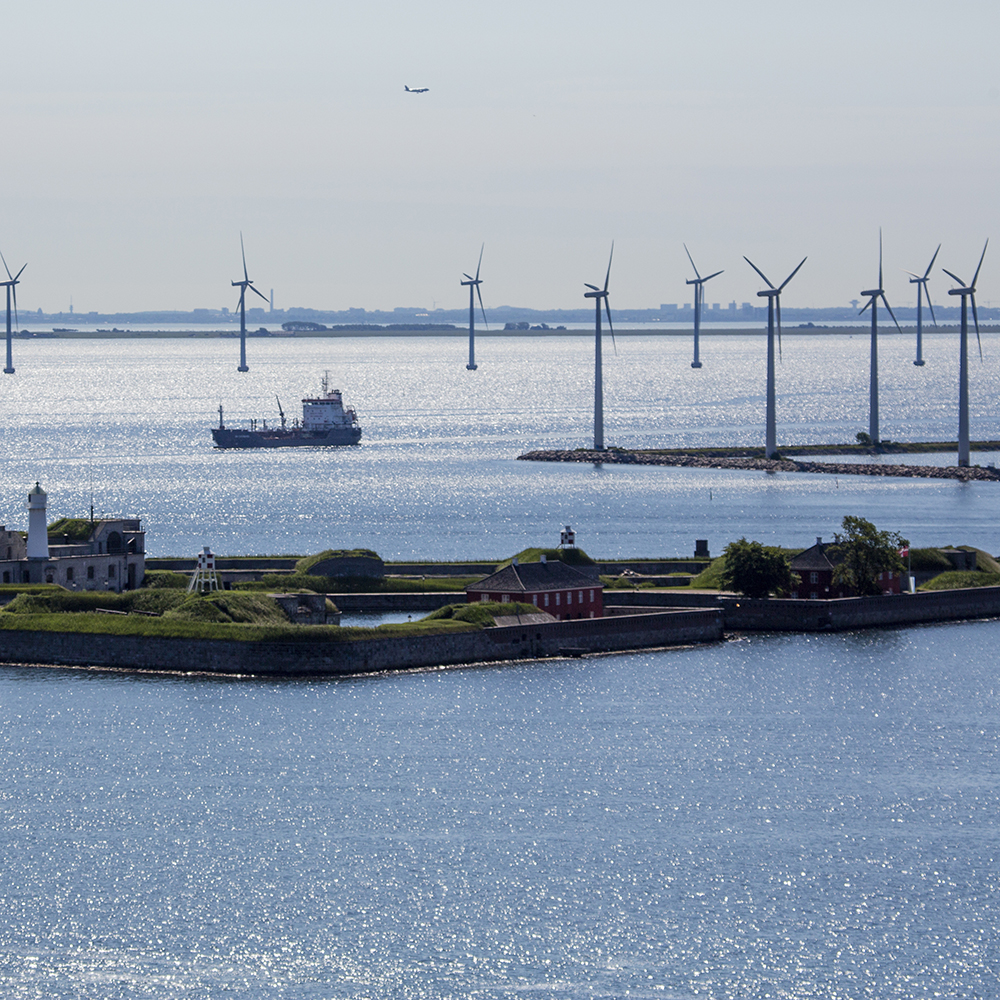In 2021, Denmark inaugurated Scandinavia's biggest wind farm. "Kriegers Flak" has a total capacity to cover electricity consumption of approximately 600,000 Danish households. The wind farm is located 15 to 40 kilometers off the Danish coast in a 132 km2 area in the Baltic Sea and is expected to increase the Danish annual electricity production from wind turbines by approximately 16 per cent.
Pioneers in clean energy
Clean energy is a Danish passion. Today, 50 per cent of electricity in Denmark is supplied by wind and solar power.
Wind energy is well-established in Denmark, which long ago decided to put the Danish climate’s constant breezes and blusters to practical use. Now Denmark produces almost twice as much wind energy per capita as the runner-up among industrialised countries in the OECD.
But you may be surprised to hear that wind energy isn’t the most widely used renewable energy source in Denmark. First place actually belongs to bioenergy, followed by wind, solar and geothermal energy.
Did you know
Bioenergy from agriculture
More than two-thirds of Denmark’s renewable energy comes from bioenergy, which is energy stored in organic material or biomass.Agriculture is big business in Denmark, and it indirectly helps provide energy too, with manure, animal fats, and straw used as the basis for biogas and liquid biofuels.
Many Danish power plants are switching from fossil fuels to biomass (wood pellets, wood chips, or straw).
Nearly two-thirds of the Danish households are supplied with district heating (heat networks), where the heat is distributed to citizens as hot water in pipes. Roughly half of the fuel for district heating in Denmark is made up of biomass and other sources of renewable energy.
While biomass is a renewable energy source, its climate impact depends on the type of biomass being used. There is a strong focus on securing sustainable biomass in Denmark.


Wind technology for export
The world’s top innovators in wind energy include the Danish company Vestas and Siemens Gamesa, which has Danish roots. Together these two companies had a share of almost a third of global wind turbine installations in 2018, according to GlobalData (preliminary results).
MHI Vestas — a joint venture between Vestas and the Japanese company Mitsubishi Heavy Industries — currently produces the world’s most powerful serially-produced turbine, the 9.5 MW. It has a rotor diameter of 164 meters — about the length of ten parking spaces!
Clean energy How to reach 100 per cent renewable energy? Denmark is trying to solve the big question
Did you know
Denmark generated half of its electricity from wind and solar power in 2020. That's the highest number ever.
A first mover in the wind business
Denmark began looking into the possibilities of wind energy after the oil crisis of 1973. A nascent wind turbine industry emerged as a spin-off of the manufacturing of agricultural machinery, and the first commercial wind turbine was erected in 1979.
The success of onshore wind power inspired the development of offshore wind energy. In 2002, the world’s then-largest offshore wind farm, Horns Reef 1, was established in the North Sea about 14-20 kilometres off the coast of Jutland.
In 2009 and 2019, two more offshore wind farms were inaugurated near Horns Reef 1. The newest of them, Horns Reef 3, is Denmark’s largest offshore wind farm and will increase the Danish electricity generation from wind by around 12 per cent. With a total capacity of 407 megawatt, the 49 wind turbines of Horns Reef 3 will cover the annual electricity consumption of approximately 425,000 Danish households.
In 2019, according to preliminary figures, a historical event occurred in Denmark: The 15th of September, from midnight to midnight, was the first day ever where wind turbine production exceeded the Danes’ electricity demand.
Energy from the Sun and the Earth
Solar power is another renewable energy source in Denmark. Solar panels are used to heat up buildings and produce district heating, and solar cells are used to produce electricity.
In addition, Denmark has three geothermal energy facilities in operation, and geothermal heat is used for district heating. It makes up only a tiny fraction of the Danish district heating production, but the potential is estimated to be high.
Finally, it is worth remembering energy efficiency — sometimes referred to as the “first fuel,” a source of energy in itself. In Denmark, remarkable results have been achieved in energy efficiency performance for households, industry and energy production.



